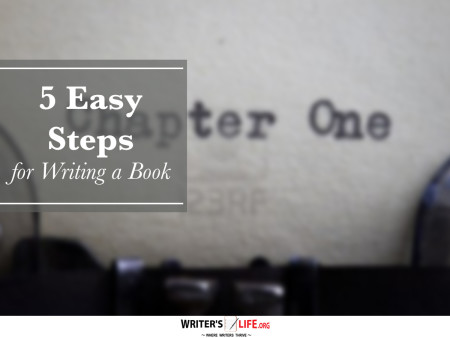- How To Tackle Jealousy In Creative Writing
- Common Submission Mistakes
- How To Stop Your Blog Becoming Boring
- The One Thing Every Successful Writer Has In Common
- How To Make Yourself Aware Of Publishing Scams
- Why Almost ALL Writers Make These Grammar Mistakes At Some Point
- 5 Tips For Authors On How To Deal With Rejection
- Top Mistakes to Avoid When Writing a Novel
- How to Avoid Common New Writer Mistakes
- 10 Mistakes New Fiction Writers Make
How to Outline a Memoir Without Losing Emotion

Outlining a memoir doesn’t mean stripping it of emotion. It’s about crafting a framework that breathes life into your personal story while maintaining its emotional integrity. Whether you're a seasoned writer or a beginner, understanding how to outline a memoir effectively is crucial for creating compelling narratives. In this guide, we explore techniques that enhance your storytelling by organizing your thoughts strategically without diluting the emotional core of your story.
Start with the Heart: Memoir Outline Tips
When you begin to outline a memoir, start from its emotional core. What is the theme or the pivotal moment you're trying to convey? Pinpointing these elements helps shape your narrative. Like a painter with a blank canvas, your outline serves as the sketch of the masterpiece you’re creating. Consider what emotions you want your readers to feel and allow those to guide your outline development. Remember, capturing the heart of your story first can make the outlining process feel more meaningful and less mechanical.
Emotional Memoir Guide: Use Storytelling Techniques
Storytelling is not just about events; it’s about the arc of emotion that those events create. To craft an effective memoir outline, think of emotional story structuring as a roadmap. Look at each chapter or key event as a waypoint in the journey of emotion. Techniques such as flashbacks, foreshadowing, and symbolism serve as bridges connecting these waypoints, creating a richer and more emotionally engaging narrative. By focusing on the emotional journey, you ensure your memoir outline remains compelling from start to finish.
Avoid Memoir Mistakes: Stay True to Your Experience
One of the most common pitfalls in memoir writing is deviating from your truth for the sake of drama. It’s tempting to embellish or alter events, but authenticity is crucial. To avoid memoir mistakes, focus on the essential memoir elements that define your story truthfully. Keep a journal to capture real emotions and reactions rather than relying on memory alone, which can be fickle. This ensures your outline remains a sincere reflection of your experiences, retaining the raw emotion that will resonate with your readers.
Effective Memoir Outlining: Prioritize Emotional Impact
As you refine your outline, consider the emotional impact of each section. Effective memoir outlining requires balancing facts with feelings, ensuring each event contributes to the narrative's emotional arc. Think of your outline as a symphony, where every moment builds into a crescendo of emotions. Don’t shy away from vulnerability; sometimes, the most powerful parts of a memoir come from moments of weakness. This honesty in your outline will translate into a book that connects deeply with readers.
Memoir Writing Challenges: Navigating Emotional Content
Emotional content can be challenging to navigate, yet it’s the heart of a memoir. One technique to ease this challenge is to break down your outline into manageable pieces. Tackle one emotional segment at a time, focusing on clarity and impact rather than trying to write everything at once. Like climbing a mountain, taking it step by step ensures you won’t feel overwhelmed by the daunting task of creating your memoir.
“Outlining a memoir demands both precision and passion; it's this duality that turns your personal history into a shared story.”
Essential Memoir Elements: Infuse Reality with Emotion
An emotional memoir guide should help keep reality and emotion in harmony. Integrate sensory details that evoke emotions without straying into melodrama. Describe the pale morning light that accompanied a pivotal epiphany or the aroma that brings a certain memory rushing back. This grounded approach enhances emotional resonance while staying truthfully aligned with your life’s events.
- Identify key themes and emotions.
- Create a timeline of significant events.
- Use sensory details to enhance emotional depth.
- Remain truthful to your experiences.
- Revise outline to ensure each part serves the story’s emotional journey.
Outline Emotional Narratives: From Draft to Completion
Transforming your detailed outline into a full draft is where your memoir truly comes alive. Start each writing session by reviewing your outline to remind yourself of the emotional tone you aim to capture. Consider this phase like stitching a quilt — each piece has its place, and together they form a complete, vibrant picture. Remember, the goal of a memoir is not just to tell your story, but to share it in a way that evokes feeling and thought in others.
Want to promote your book after it’s published? Check out our Book Marketing Articles.
According to Wikipedia, memoirs are a subcategory of autobiography, but they focus more on personal experiences and emotions, providing a more intimate, subjective perspective of life events.
Frequently Asked Questions About Outlining a Memoir
Q: How do I ensure my memoir outline stays emotional?
A: Focus on the emotional arcs of your story. Each section of your outline should serve the larger emotional journey you want to convey.
Q: Can I include fictional elements in my memoir?
A: While embellishment can seem tempting, it may detract from your memoir’s authenticity. It’s best to remain truthful to your real experiences.
Q: How detailed should my memoir outline be?
A: Your outline should be detailed enough to guide you through your writing but flexible enough to allow for emotional spontaneity and reflection.
If you're serious about growing your author career, don't miss out on these free tools and templates built specifically for writers. Access all 7 free resources here.


























